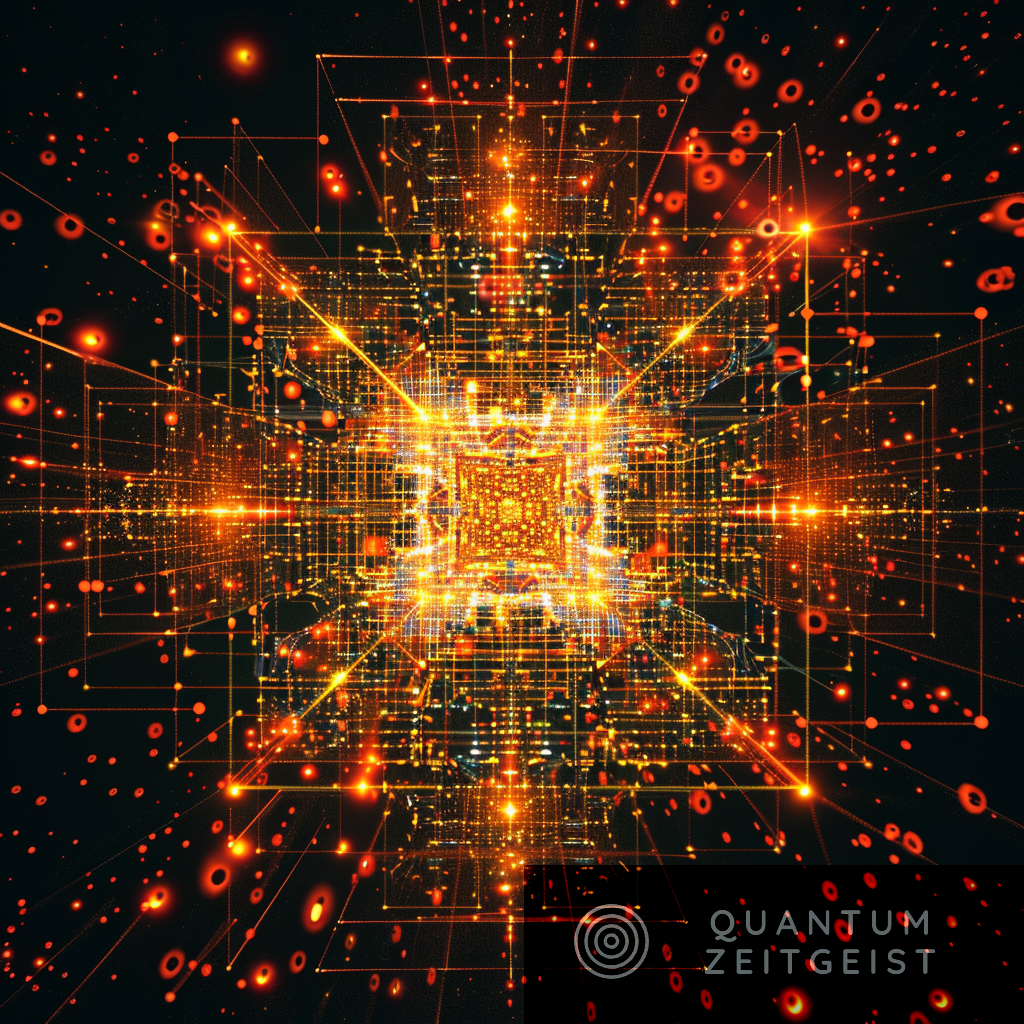A study by Paul Pöpperl, Igor V. Gornyi, David B. Saakian, and Oleg M. Yevtushenko explores the statistical properties of a single two-level system qubit subject to repetitive ancilla-based measurements. The researchers found that this model exhibits dynamics similar to the Anderson localization phenomenon, but with different underlying mechanisms. They identified two distinct phases of the monitored qubit: ergodic and nonergodic, and a localized phase within the nonergodic phase. These findings could have significant implications for quantum computing and information processing technologies, and open up new avenues for further research in quantum physics.
What is the Study About?
The study, conducted by Paul Pöpperl, Igor V. Gornyi, David B. Saakian, and Oleg M. Yevtushenko, focuses on the statistical properties of a single two-level system qubit subject to repetitive ancilla-based measurements. This setup is a fundamental minimal model for exploring the intricate interplay between the unitary dynamics of the system and the nonunitary stochasticity introduced by quantum measurements. This interplay is central to the phenomenon of measurement-induced phase transitions.
The researchers demonstrate that this toy model harbors remarkably rich dynamics, manifesting in the distribution function of the qubit’s quantum states in the long-time limit. They uncover a compelling analogy with the phenomenon of Anderson localization, albeit governed by distinct underlying mechanisms. The state distribution function of the monitored qubit, parameterized by a single angle on the Bloch sphere, exhibits diverse types of behavior familiar from the theory of Anderson transitions, spanning from complete localization to almost uniform delocalization with fractality occurring between the two limits.
By combining analytical solutions for various special cases with two complementary numerical approaches, the researchers achieve a comprehensive understanding of the structure delineating the phase diagram of the model. They categorize and quantify the emergent regimes and identify two distinct phases of the monitored qubit: ergodic and nonergodic. Furthermore, they identify a genuinely localized phase within the nonergodic phase, where the state distribution functions consist of delta peaks, as opposed to the delocalized phase characterized by extended distributions. Identification of these phases and demonstration of transitions between them in a monitored qubit are the main findings of the study.
What is the Anderson Transition?
The Anderson transition is a seminal example in the theory of phase transitions. Its archetypal setup involves noninteracting particles in a random potential. When strong disorder is introduced in the system, the wave functions of particles become spatially localized. Conversely, for weak disorder, the wave functions may spread uniformly throughout the system, exhibiting extended behavior. The transition between the two phases is characterized by critical fluctuations of wave functions, leading to the formation of a multifractal spectrum.
Recently, a similar type of phase transition governed by randomness has been discovered in hybrid random quantum circuits subject to both unitary evolution and local measurements monitoring. In monitored systems, randomness is introduced by the quantum probabilistic nature of measurement outcomes rather than by the disordered potential. The stochastic nonunitary evolution of the system emerges from the inherently projective nature of measurements.
What is the Significance of the Study?
The influence of measurements on the dynamics of quantum systems has attracted considerable attention, largely because of recent advances in the field of quantum information processing. Regardless of the particular quantum hardware, the nuisance of environmental noise is a formidable challenge. In this context, it is crucial that measurements can act both as a tool to monitor the properties of a quantum system and as a source of controllable disturbances.
It is the interplay of the unitary evolution of the system with the nonunitary one governed by measurements that gives rise to measurement-induced entanglement phase transitions, a phenomenon originally predicted and studied in the context of quantum circuits. These transitions and related phenomena were subsequently investigated in a variety of models, including free fermionic systems, Ising spin systems, various models with interactions, and disordered systems exhibiting Anderson or many-body localization.
How Does the Study Relate to Anderson Localization?
A direct link between measurement-induced entanglement transitions and the phenomenon of Anderson localization was recently established by deriving nonlinear sigma-models for monitored free fermions. These field theories share significant similarities with those used in the context of Anderson localization. Particularly noteworthy is the striking resemblance between the predicted entanglement transition for free fermions in spatial dimensions larger than one and the Anderson transition observed in disordered systems of dimension D=1.5-2.
In the field of measurement-induced dynamics, the entanglement transition can be considered as a metal-insulator transition for quantum information. In this analogy, mutual information serves as a counterpart to dimensionless conductance, shedding light on the evolving properties of the quantum system under the influence of measurements.
What are the Implications of the Study?
Importantly, both the Anderson transition and the measurement-induced entanglement transition are phenomena that take place in infinite systems (thermodynamic limit). The main question addressed in this study pertains to whether a macroscopic system can exhibit similar behavior. The researchers’ findings suggest that it is indeed possible, opening up new avenues for further research in the field of quantum physics. The identification of distinct phases and transitions in a monitored qubit could have significant implications for the development of quantum computing and information processing technologies.
Publication details: “Localization, fractality, and ergodicity in a monitored qubit”
Publication Date: 2024-03-22
Authors: Paul Pöpperl, I. V. Gornyi, David B. Saakian, Oleg M. Yevtushenko, et al.
Source: Physical review research
DOI: https://doi.org/10.1103/physrevresearch.6.013313

